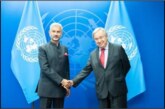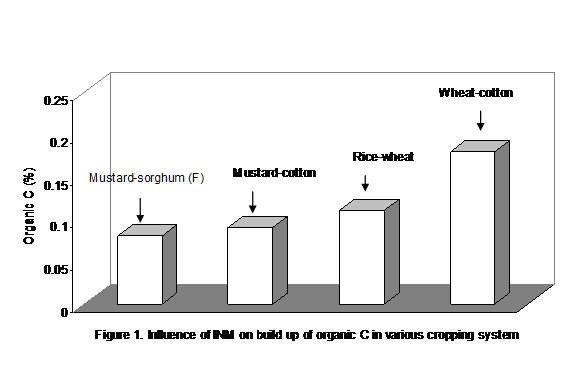Recently concluded the Asia-Pacific Economic Cooperation (APEC) Summit was held in Vladivostok (Russia) from 2 to 9 September, 2012. During the week of the summit, there were a series of meetings Concluding Senior Officials’ Meeting (2-3 September), APEC Business Advisory Council Meeting (4-6 September), APEC Ministerial Meeting (5-6 September), and APEC CEO Summit (7 -8September).
Discussion of problems in APEC Summit Week 2012 is a continuation of previous meetings that focused on trade and investment liberalization, regional economic integration, increased food security, establishment of reliable supply chain and intensive cooperation to foster innovative growth.
APEC is economic cooperation forum of the Pacific Rim set up in Canberra, Australia, in 1989. Currently there are 21 member APEC economies, namely Australia, Brunei Darussalam, Canada, Chile, China, Hong Kong-China, Indonesia, Japan, South Korea, Malaysia, Mexico, New Zealand, Peru, the Philippines, Papua New Guinea, Russia, Singapore, Thailand, Chinese Taipei, the United States, and Vietnam.
The 21 members of the grouping that accounts for nearly half of world trade meet every year to build goodwill in their effort to break down trade barriers, with the bloc’s rules decided by consensus. At the summit, the heads of APEC economies will share their views and also the steps in finding a solution for the critical economic issues in the region. In 2012 Russia became the chair and host of the APEC meetings.
On 8 September 2012, Asia-Pacific leaders called for unity in tackling a raft of economic challenges, as an annual summit began amid deep divisions over worsening territorial disputes and other rows. Summit host President Vladimir Putin opened the two-day gathering of the Asia-Pacific Economic Cooperation bloc in Vladivostok with a call for a renewed joint commitment to open up regional trade.
Putin told his fellow leaders: “By getting together and lifting barriers, we encourage dynamic development of the entire Asia-Pacific region and the global economy in general. It is important to build bridges, not walls.” However, the 2012 APEC summit began with APEC giants China, Japan and South Korea embroiled in various territorial disputes that have fanned intense nationalist flames, and with US-Chinese relations also heating up over the South China Sea.
US Secretary of State Hillary Clinton — standing in for President Barack Obama at APEC — said on 8 September 2012 that the United States was determined to increase its economic and political footprint in the region: “After an extended period in which the United States had to focus a great deal of attention and resources on regions and conflicts elsewhere, we are now making substantially increased investments in the Asia-Pacific.
APEC leaders insisted they would still make progress in Vladivostok in opening up economies despite the tensions. They would jointly call for greater efforts to “support growth and foster financial stability and restore confidence”, according to a draft of a leaders’ statement released at the end of the summit.
According to media reports, the 21 APEC members pledged “to fend off the deepening damage from the European crisis and revive flagging growth in the region by supporting open trade, reforming their economies and strengthening public finances.”
Alan Oxley, chairman of the national Australian APEC Study Center at RMIT University in Melbourne, Australia, has told Trend Lines, “The key background is continuing concern about the capacity of European economies to manage the financial crisis in Europe. In this, APEC economies are bystanders.” But while “lagging growth in the U.S. and growing concern about the fundamentals of the Chinese economy” figure strongly into APEC perspectives on the global economy, these issues were not addressed at the summit.
Beyond APEC’s basic mission of promoting free trade and economic cooperation, Oxley said the value of its broader role lies in “looking at development and relationships through an open market lens, regardless of the political tensions among members.”
The global financial crisis, the European debt crisis and structural imbalances in the world economy have stalled trade openness across nations and led several countries and regions to adopt protectionist measures.
Against this backdrop, APEC decided to refrain from trade and investment protectionist measures until the end of 2015 and not follow any WTO non-compliant measures. Both decisions are a move in the right direction. However, not giving enough importance to India, which could be another catalyst for promoting trade reform among emerging economies, is not a good idea.
Food availability and food security, amid rising food prices across nations, was another important global issue on the APEC agenda. Agricultural issues such as investment, sustainable agricultural techniques, and innovation and technology transfers were up for discussion to ensure better agricultural productivity growth across the Asia Pacific.
The commitment of APEC leaders in Vladivostok to improve food production, distribution and farmers’ welfare is in step with addressing the world’s food crisis. Food trade, which has the potential to stabilise food prices across countries, and maintaining safety standards will be crucial in maintaining social harmony within and across countries. Given India’s population, it was imperative that India be given a chance to participate in the discussion on agricultural productivity through technology transfers, rather than remain an observer.
APEC also committed to achieve a 10 per cent improvement in supply chain performances by 2015 in the Asia Pacific. This would lead to reductions in cost and time, and improve certainty in the delivery of goods and services in the Asia Pacific. It means member countries would work toward improving the coordination among government agencies, existing restrictions on trade and technical expertise, as well as tackling infrastructural challenges.
India and APEC
The APEC region is home to the world’s four largest economies (China, India, Japan and the United States) and it makes no strategic sense to exclude one of the four – especially when India is already a member of the East Asia Summit and the G20. Despite China’s view of its own size and connectedness as a compelling argument for the leading role in the region, it will have to get used to the fact that India, while much less integrated, is and will be of vast size as well.
The time is ripe for APEC now to include expanding membership to India when the ten-year moratorium has already expired in 2010. A positive decision would have many significant implications.
An implicit goal of Asia’s regional organizations is to attract the giants to cooperate in the production of regional public goods that help secure global economic stability. Fostering deeper integration through trade and investment ties raises the costs of aggressive military or political behavior.
Another significant aspect of India’s potential APEC membership is that it has reached out to integrate with the Asian economies despite the fact that its domestic economy is less open and faces huge legacy problems left over from its socialist past. India has joined the race towards sub-regional trade agreements with ASEAN, Singapore and others — and has even considered a bilateral free trade agreement with China.
India needs the peer pressure and encouragement of APEC’s variable-speed liberalization processes to undertake reforms that could allow it to be a new hub in the region’s production networks in which it does not yet participate to any great extent. India’s membership in the 2012 APEC Summit would have been helpful to member countries, particularly developing nations in the Asia Pacific.
India’s membership would enhance the effectiveness and importance of APEC and prove beneficial for India. India has expressed its desire for formal involvement with the organisation for decades, but its application has been overlooked on geographic grounds. As a member of the G20, the ASEAN Regional Forum and the East Asia Summit, as well as an ASEAN dialogue partner, India is capable of playing a very crucial role in deepening trade and investment in the region.
India has vigorously pursued its ‘look east’ policy from 1991 and has signed trade agreements with South Korea, Japan, ASEAN, Singapore, Thailand and Malaysia. India is also a potential production network hub for the region, and being a part of APEC would encourage India to speed up its trade liberalisation process. Indian membership in APEC, therefore, will enhance capacity building and trade and investment cooperation in the region.


